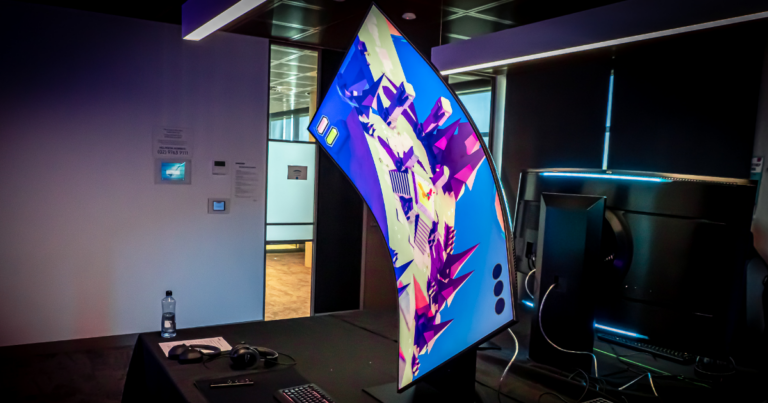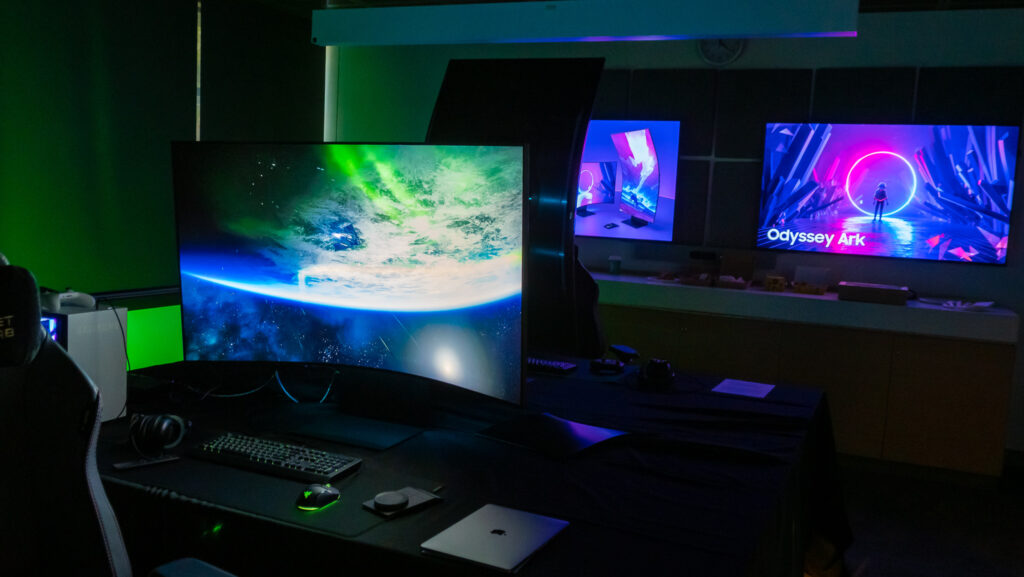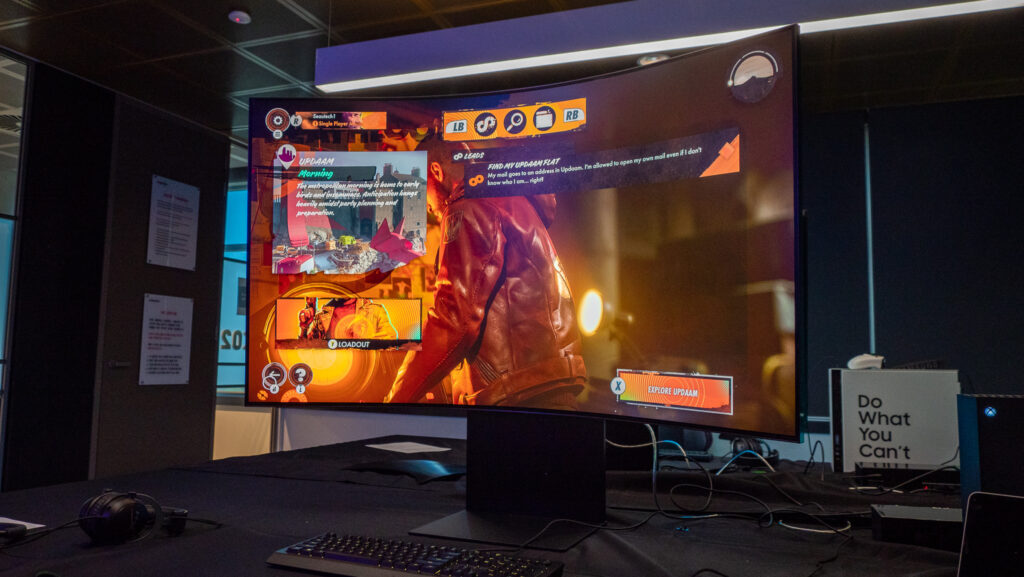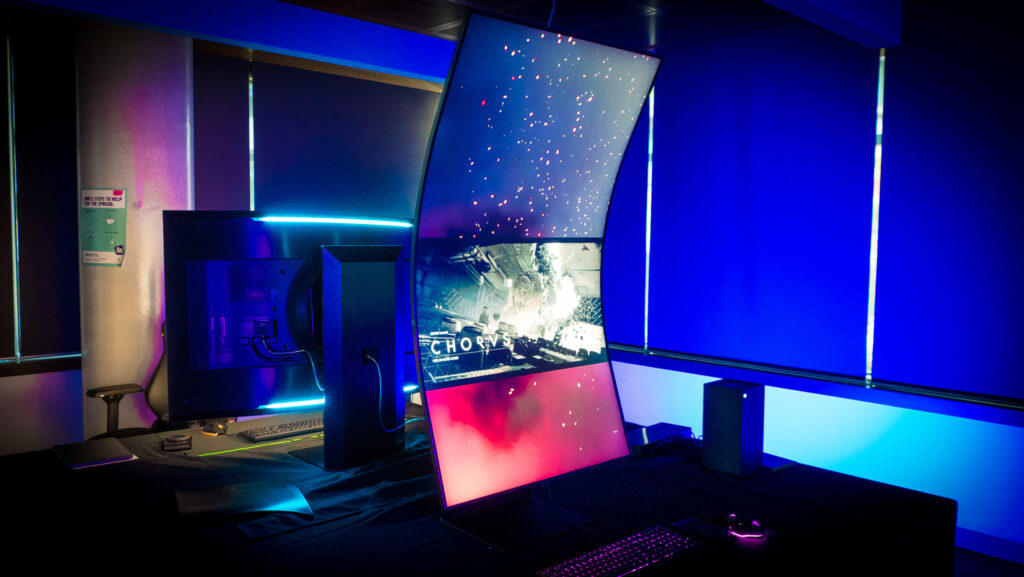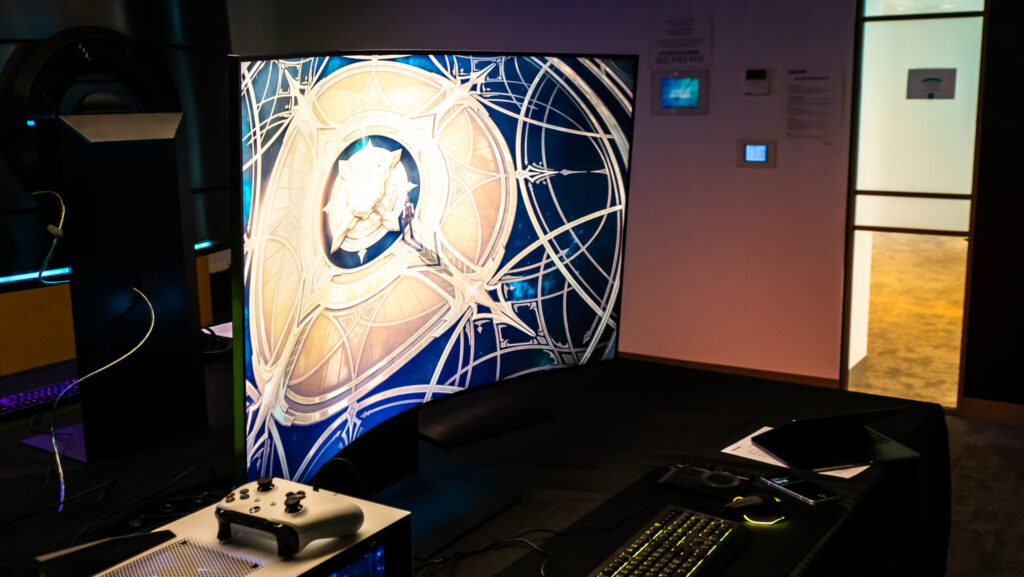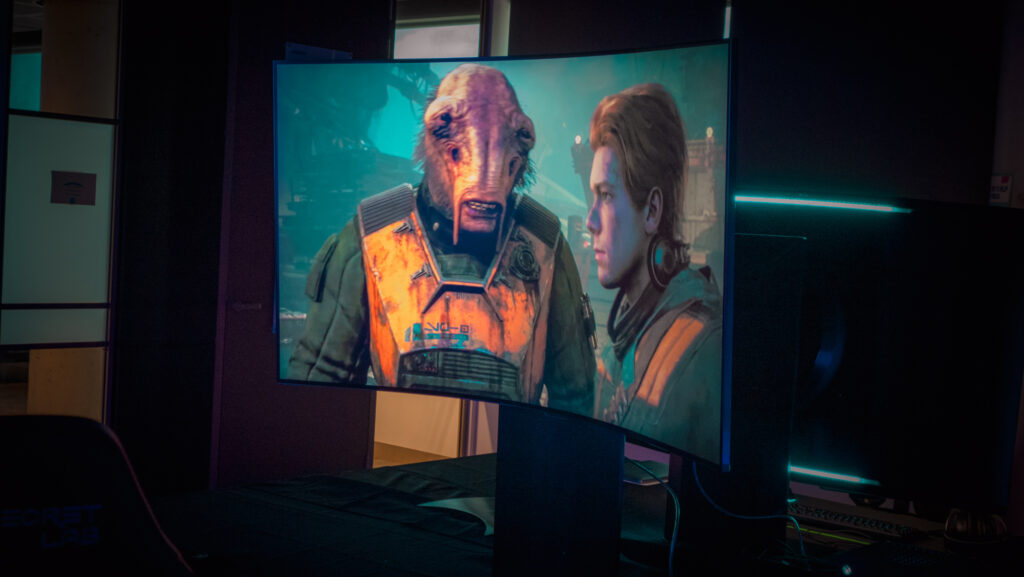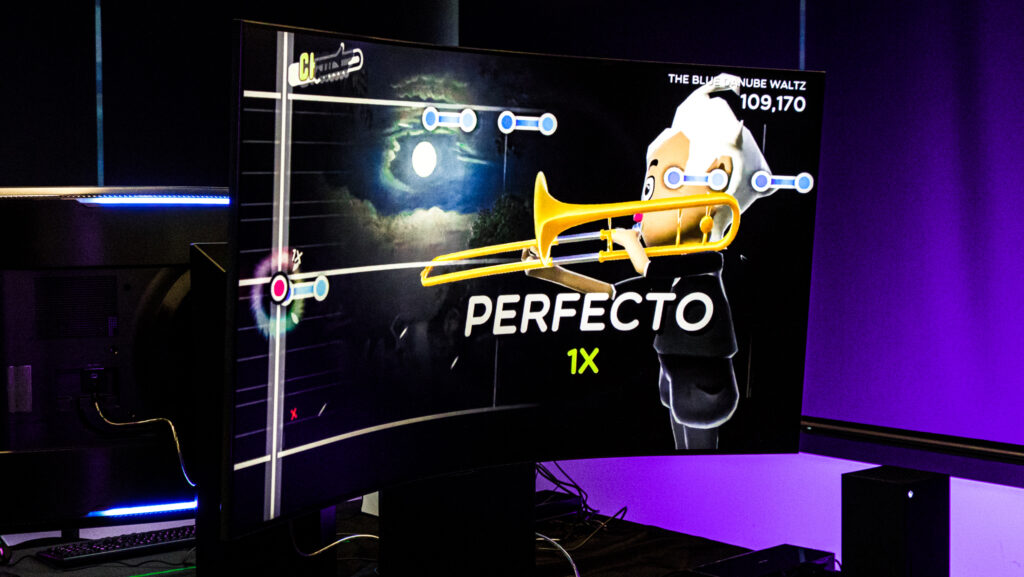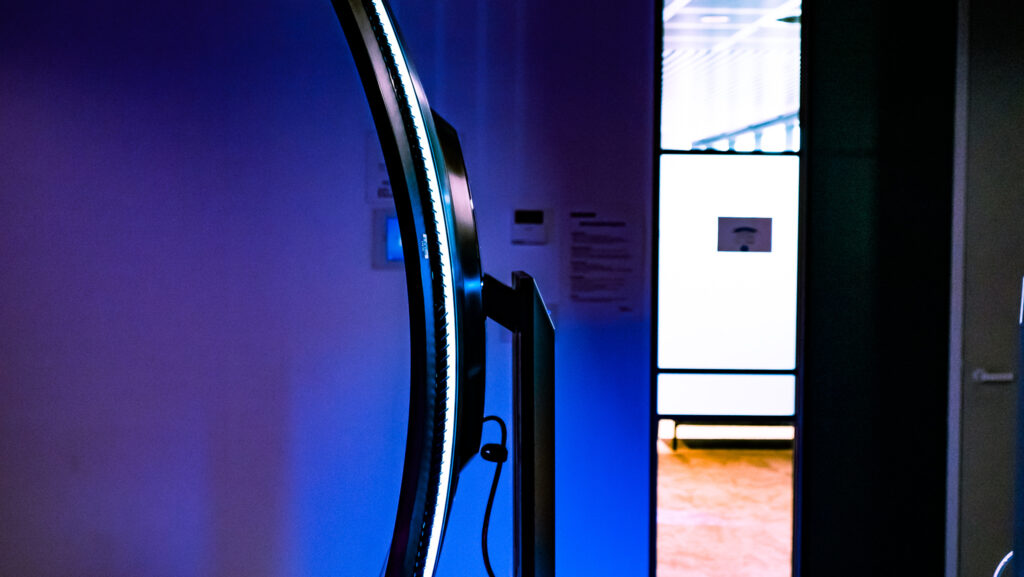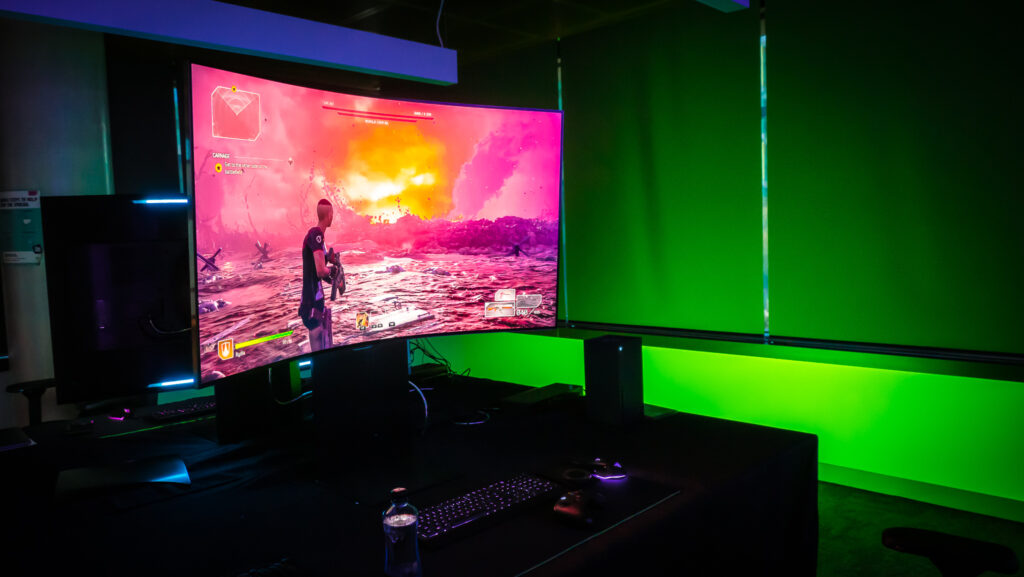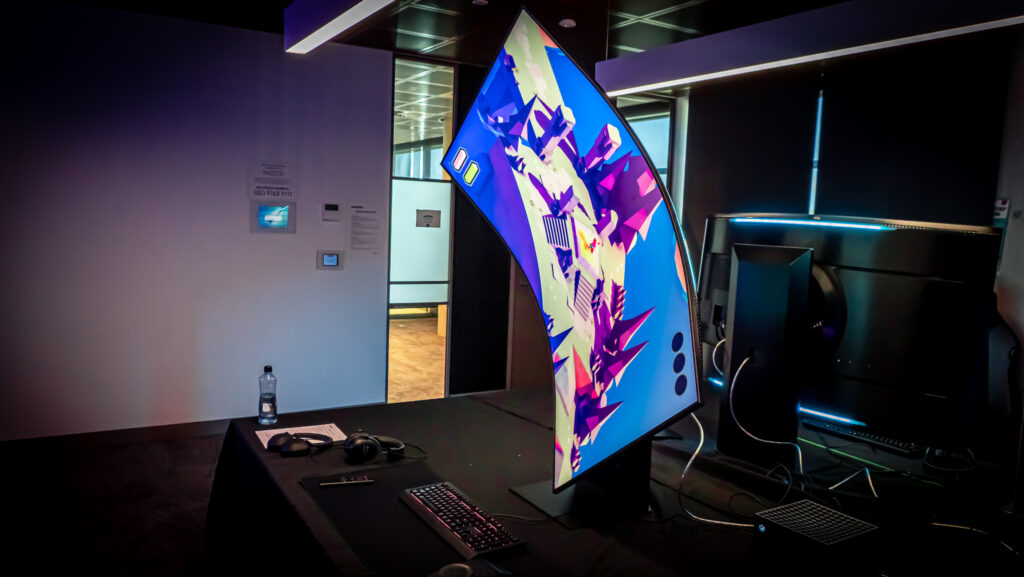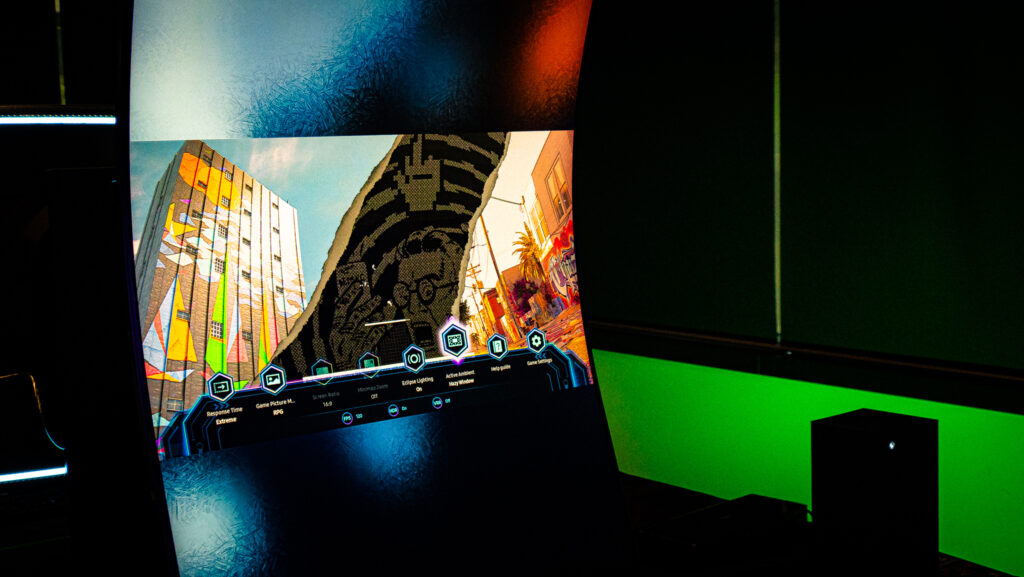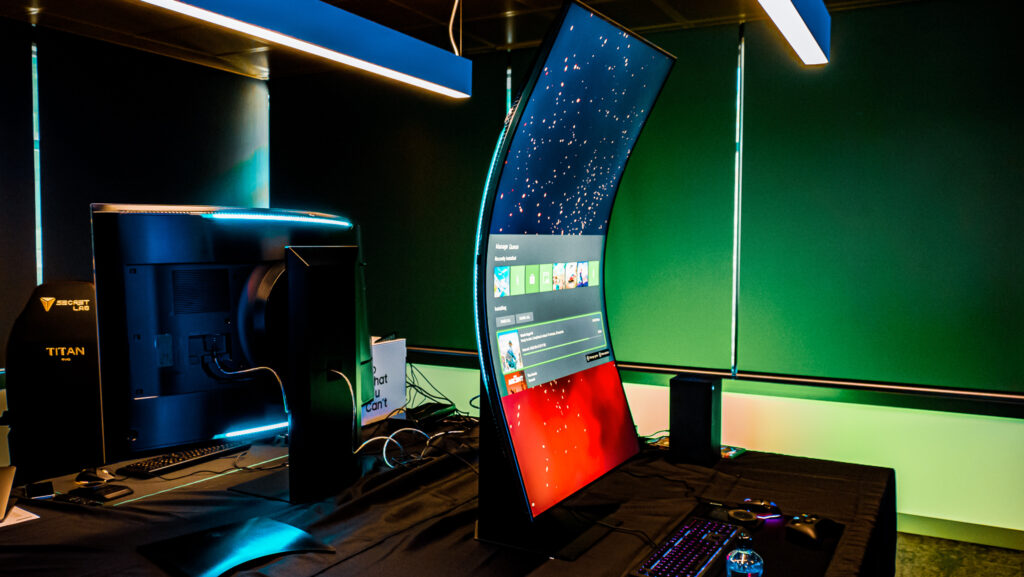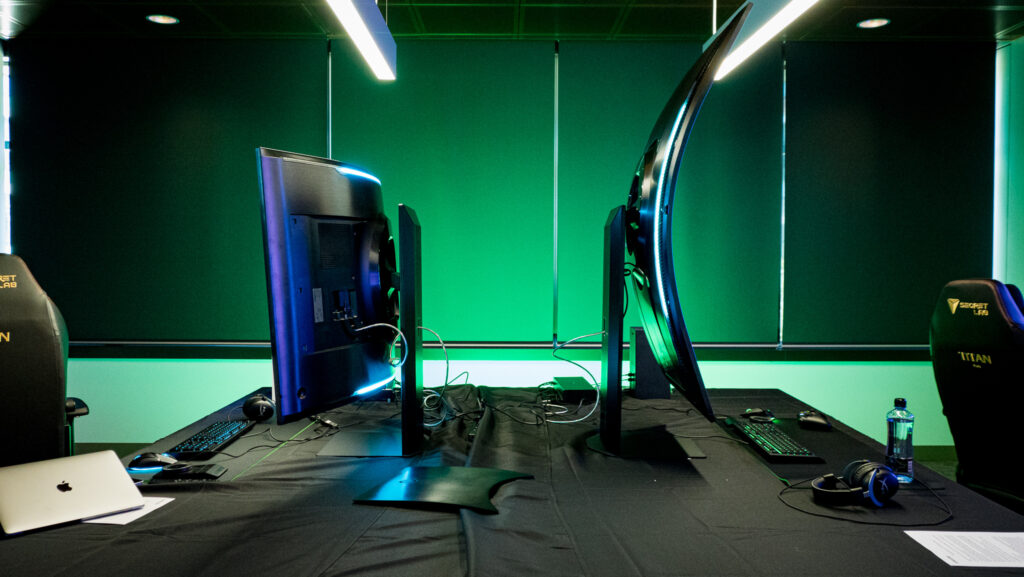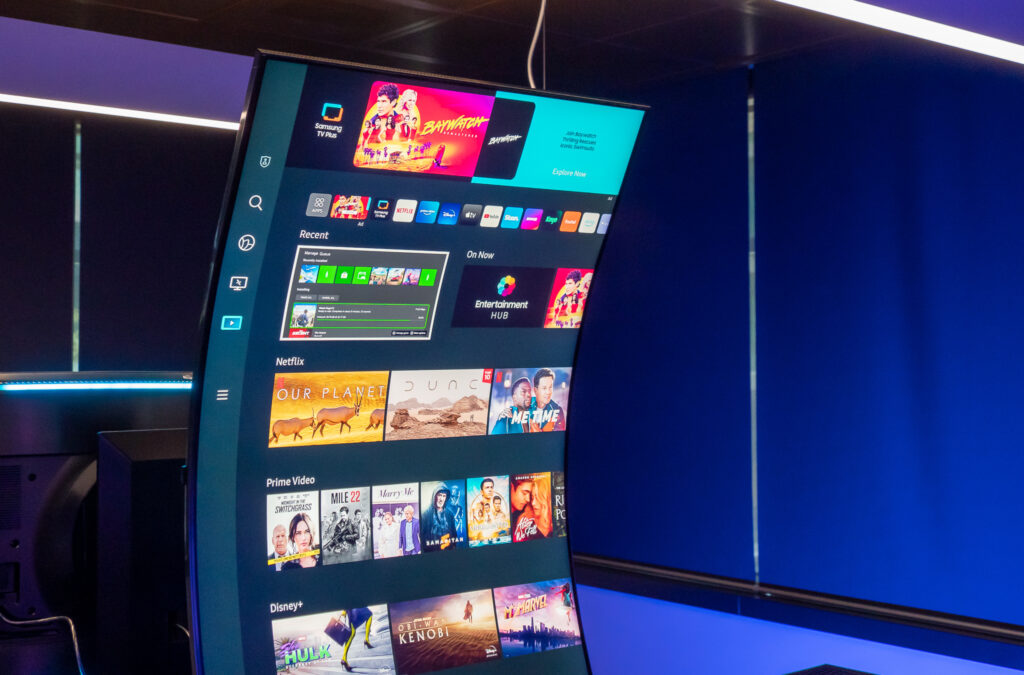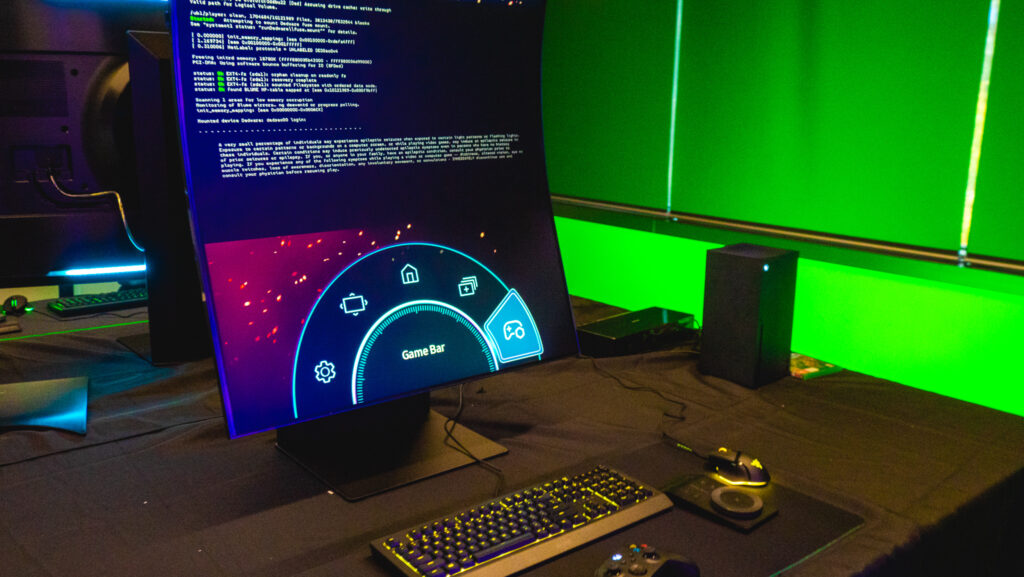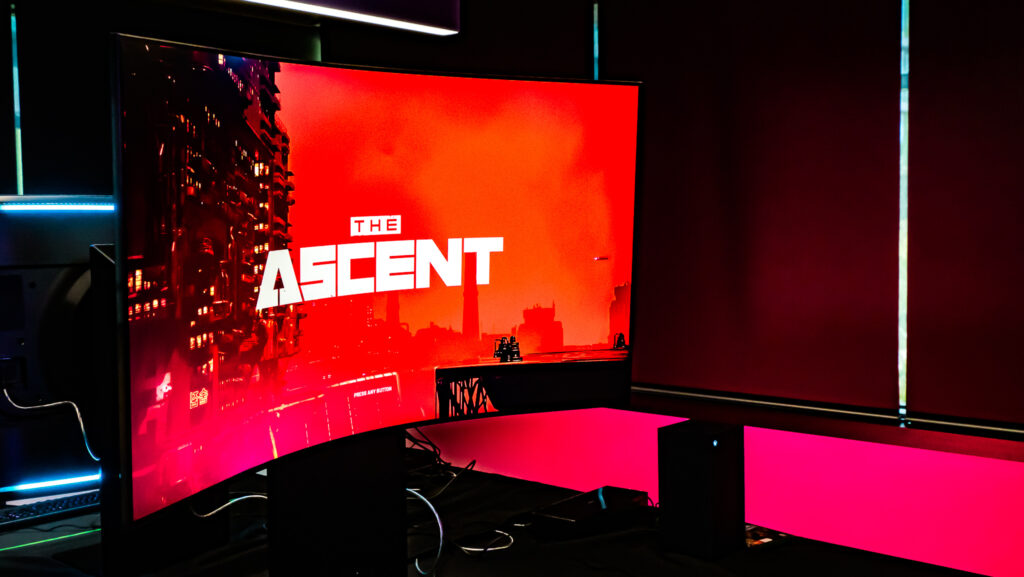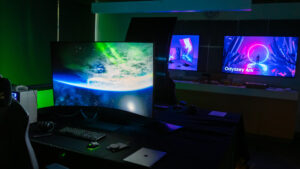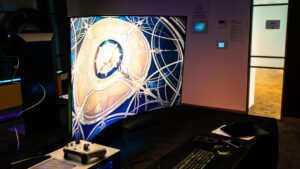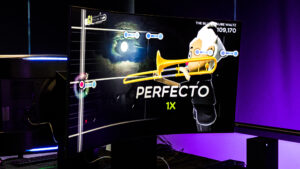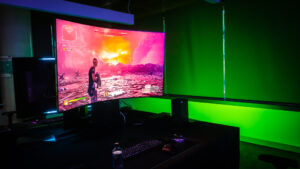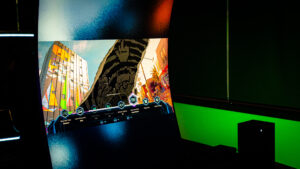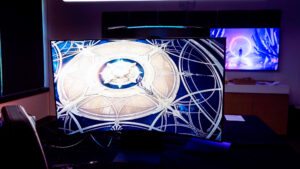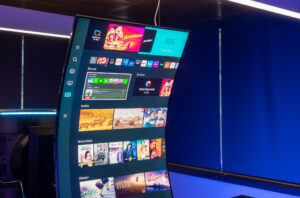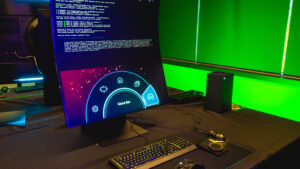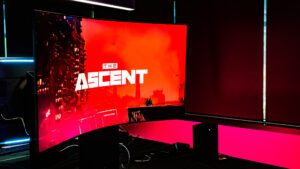A gaming monitor big enough for two of anything.
Hands-on with the Samsung Odyssey Ark
Samsung is looking to make something of a statement with the gaudy and gargantuan Odyssey Ark gaming monitor. The 55-inch 4K display blurs the lines between a high-end gaming monitor and a big-screen TV, but there’s enough from both strata that it doesn’t neatly fit into either.
Here are some initial thoughts based on an afternoon of hands-on time with what is shaping up to be 2022's biggest and boldest gaming monitor.
Primed to make PC gaming feel bigger. As obvious as it sounds on paper, the fact that the Samsung Odyssey Ark is as big and curved as it is makes the experience of sitting in front of it feel significantly more engrossing than even an ultrawide gaming monitor like the Alienware 34 Curved QD-OLED. It's similar to the kind of bump in immersion you get from seeing a movie at the cinema versus your living room.
Even if it sometimes feels like the Ark is almost smothering you, everything you put on the screen reads as a little bit bigger and more engrossing. Stylish-looking indie games like Going Under and Tunic benefited from this intangible aura just as much as big-budget titles like Deathloop and Microsoft Flight Simulator did.
The One Connect Box still rules. The Samsung Odyssey Ark is currently the only gaming monitor out there that incorporates Samsung's One Connect Box. This specific accessory has been a godsend for me when it comes to cabling in my living room, and it's just as useful in this new context. Rather than ever have to reach around to the backside of the Ark, any and all cable management involved with the monitor is relocated to wherever you decide to house the One Connect Box.
Quad-speakers setup sounds great. When it comes to gaming monitors, the emphasis tends to be on how they look rather than how they sound. While the 4K resolution, Quantum Mini LED backlighting and 165Hz refresh rate here keep the picture quality offered here sharp, it's the built-in quad-speakers that really help the Odyssey Ark cut through the crowd of other expensive monitors out there. The Dolby Atmo setup here sounds awesome and it adds a lot to the gaming experience offered by the Ark, particularly if you don't always want to be using headphones.
Gaming features you might actually want to use. As with the Smart Monitor M8 that launched earlier this year, the Odyssey Ark runs on the latest version of Samsung's Smart TV UI operating system. While there's plenty to say about the various pros and cons that this software brings to the table, the freshly-evolved version of the Game Bar found with the Odyssey Ark feels significantly more useful than previous efforts.
In a pinch, the interface allows you to quickly adjust display settings without pulling you away from your content in the way that Samsung's more all-encompassing smart TV interface tends towards. The Ark's Game Bar is also used to configure the LED lighting on the back of the monitor and manage a feature that Samsung call the Active Ambient. In situations where you don't want to use all 55-inches of Odyssey Ark all at once, this inclusion substitutes what would otherwise be wasted pixels with unique and dynamic patterns designed to complement the colors displayed on the screen.
Tempting to tinker with. One of the most compelling things about the Ark is the sheer amount of options that you’ve got when it comes to how you want to use it. Aside from the obvious ability to tilt the screen between vertical and horizontal orientations, it's also very easy to slide the height of the Ark up or down as needed. The process of making the hardware here suit your situation is extremely intutive and very much a case of what you make of it.
The aforementioned Ark Dial extends this quality further and in cool ways. It's just as easy to imagine it as a complement for the TV-style remote that the Ark ships with as it is an outright substitute. It also doesn't hurt that the wheel on this tactile controller was just as much fun to spin as the rotating bezels on some of the Samsung's older Galaxy smartwatches.
Initial cons
Doesn't rotate automatically. Of course, the natural flip-side of the DIY narrative around the versatility of the Ark is that it doesn't offer the same kind of fluid context-switching found in something like Samsung's Sero TV.
Unlike the Sero, changing between vertical and horizontal orientations is an entirely manual process. A Samsung spokesperson indicated to me that the main reason for this has to do with the weight of the panel, which makes sense. Nevertheless, the trade-off being made here between the futuristic form factor that the Ark is pitched as and the handiwork involved can sometimes kill the buzz. It didn't help that the software side of the orientation shift wouldn't always play nicely with Windows.
Multi-view is very finicky. The ability to use the massive canvas here to show off multiple inputs in a split-screen configuration is one of the Ark's coolest tricks. It's something you can only do with a screen this large. Unfortunately, one of the Odyssey Ark's bigger advantages over a more conventional multi-monitor setup comes with an even bigger caveat. It's extremely tedious in practice.
Interacting with anything that's not connected to a mouse and keyboard tends to be pretty slow and clunk and, at the time of writing, you're limited to Samsung TV+, YouTube, and the display's built-in web browser as secondary inputs. These caveats aren't necessarily going to be the deal breaker for the kind of power user that Samsung is trying to court with the hardware here, but it's a shame that the company hasn't gone just a bit further when it comes to making multi-view feel like the way you want to interact with the Ark versus just one of many ways you can.
Vertical orientation isn't for everyone. The sheer size and cost involved with the Samsung Odyssey Ark is hard to ignore or even talk about. In a big room, the Ark feels encompassing. In a smaller one, I could easily imagine it feeling overwhelming. It really does feel like the kind of big tech purchase that’s only going to make sense if you have the space to fully accommodate it without it dominating the space.
Nevertheless, if you're going to spend this much on a gaming monitor that can support vertical orientations, you probably want to use it to its fullest. While I could imagine users out there feeling otherwise, I personally struggled to find situations where I actually wanted to use the cockpit configuration that the Ark is capable of offering. If you aren't already converted or looking for a screen that can offer this kind of vertically-oriented experience, Samsung isn't really interested in selling you on it.
First thoughts
There are two ways you can go when it comes to tech, and gaming gear like this in particular. You can be better, or you can be different. There's no harm with trying to be both, but cutting through the crowd usually requires you to lean one way or another.
The Samsung Odyssey Ark leans towards the latter. If you're in the market for a new gaming monitor, it's not hard to find alternatives armed with either more pixels or a higher refresh rate. However, if you're looking for a gaming monitor that's just as capable as one of Samsung's premium 4K TVs, your options narrow considerably.
Similar in some ways to the LG CX OLED or NVIDIA's Big Format Gaming displays, the Odyssey Ark fits into a new niche that's less concerned with the finer details of display tech and more about making PC gaming feel big and cinematic in a way that a conventional monitor simply can’t match. It's more than a Samsung Q90 4K TV with a curved form-factor, a nifty stand and a 165Hz refresh rate, but is also all of those things and often all the better for it.
How much does the Samsung Odyssey Ark cost?
In Australia, the Samsung Odyssey Ark is set to land in the market with a hefty recommended retail price of $4,499. That's more than most people are willing to pay for a TV, or even Apple's exxy Mac Studio Display.
To sweeten the deal, those who pre-order the monitor before October 23 via Samsung directly will score a trio of freebies. Those who put down the cash for a Samsung's Odyssey Ark will net themselves a Secretlab TITAN Evo 2022 Series Gaming Chair, a limited edition Odyssey Magnetic Head Pillow to go with said chair, and a 1TB Samsung 980 PRO NVMe SSD. Meanwhile, those who preorder through Harvey Norman will score a $1,000 Harvey Norman gift card.
How we review monitors
Monitor reviews start with prices relative to features. For example, it’s okay for a widescreen high-resolution monitor to cost more if it has a fast refresh rate, lots of ports and a bright display. Similarly, we appreciate that portable monitors can be pricier relative to their portability, versatility and ease of use.
Before connecting, we have a look at the weight, mounting options and ports to appraise connection options and compatibility. Once connected, we love a monitor that’s plug and play. Companion software isn’t essential, especially if it takes up a USB port to track monitor usage, but it’s nice to have, particularly if physical monitor controls are missing or difficult to use.
The next step is to put the monitor through its paces as an everyday screen. This means using the monitor for basic computing, video playback and gaming to see how it performs in terms of brightness, viewing angles and colour accuracy. Extras like onboard speakers, headset brackets and other perks also help separate an average monitor from one that’s worth paying hundreds of dollars for.
Related Articles






